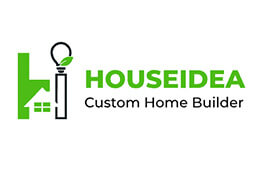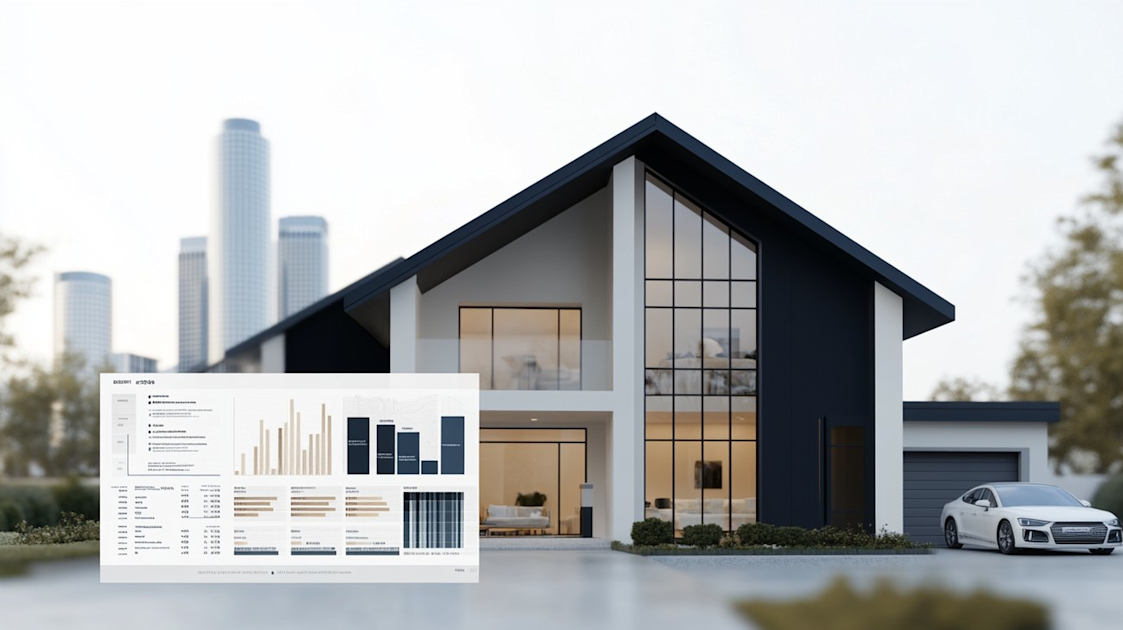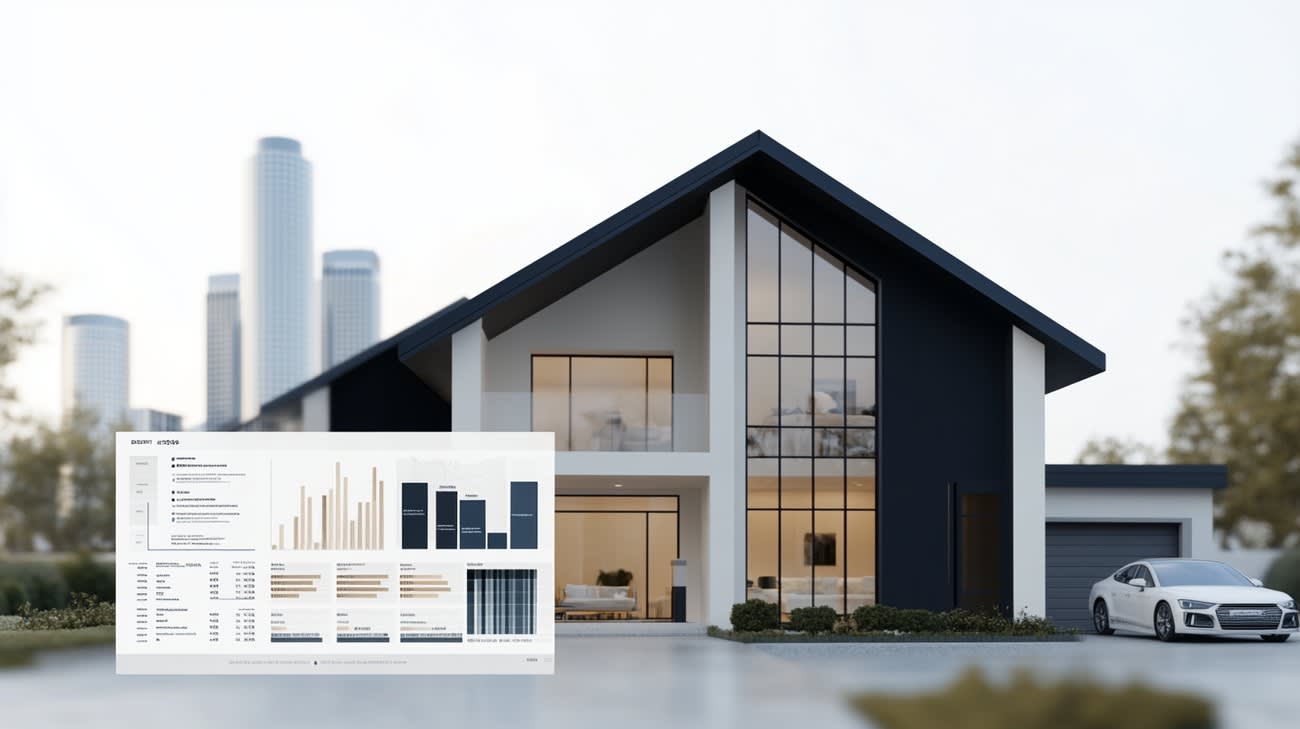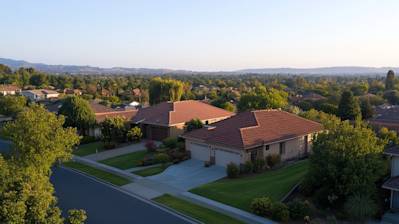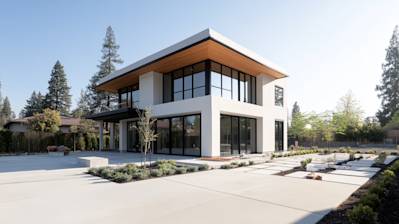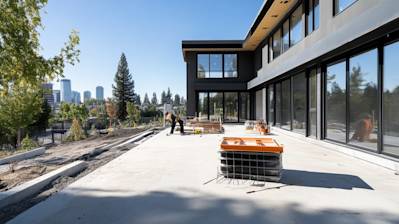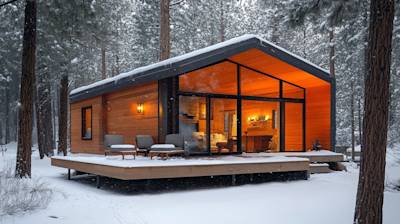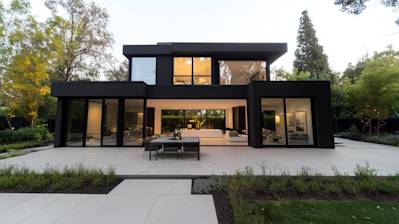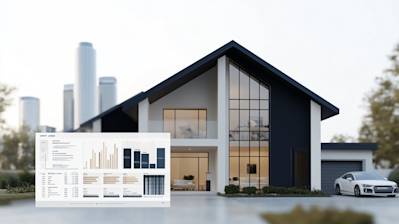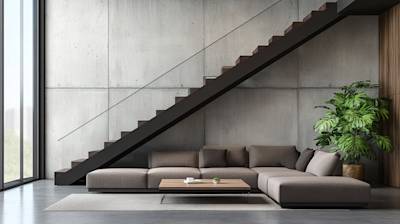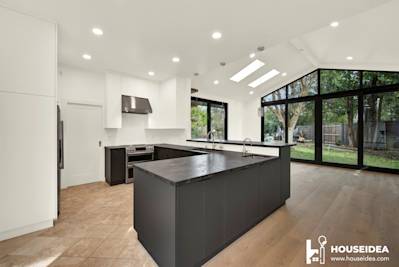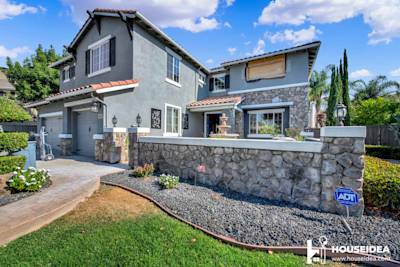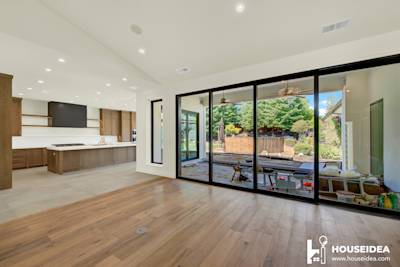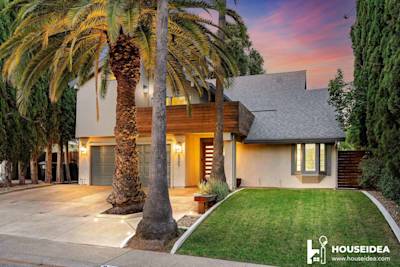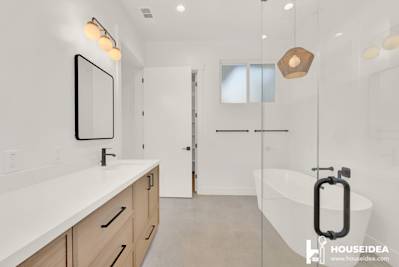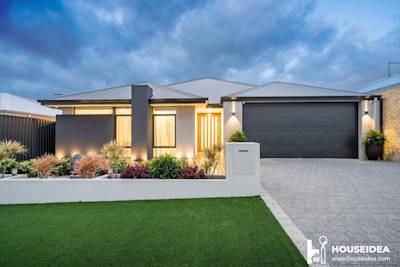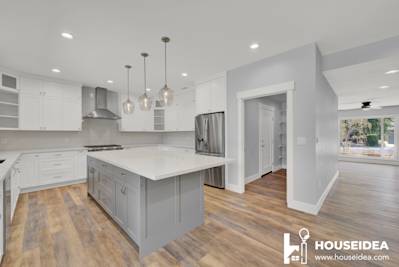If you’re serious about breaking ground on your own custom home, you've probably heard about the varied costs that come along with it. When building a custom home, it's important to have a thorough understanding of the financial commitment you're about to make. An essential step in successfully orchestrating and overseeing the construction of your dream home, is understanding the custom home budget breakdown. This article will walk you through just that!
Know Your Budget: A Starting Step in Home Construction Process
Before creating a blueprint or choosing a lot, you must first establish your budget.
- Setting an Expense Ceiling: Analyzing your financial capability is paramount. You need to set a limit that you can comfortably invest without straining other aspects of your lifestyle.
- Preparing a Contingency Fund: Building a contingency fund of about 10% of your budget is wise to cover unforeseen costs.
Detailed Breakdown of Building a Custom Home
The following section provides a percentage breakdown of costs you can expect when building a custom home.
Land Costs: Foundation to your Dream Home
In most cases, the first big hurdle in your custom home budgeting process would be the cost of acquiring land. Expect this to be about 20-25% of your budget, though prices can fluctuate depending on the location and size of the land.
Architecture and Design: Crafting your Dream
Each corner of your home needs careful planning and designing. Architecture and design services follow the land in typical capital allocation. They usually consume around 10-15% of your overall budget. Detailed planning can save time and minimize later construction errors.
Construction and Build: Actualizing Your Vision
Without a doubt, the most prominent contribution to your budget will be the actual construction of your custom home. Depending on design complexities, the construction cost can eat up about 45-55% of your total expenditure.
Construction Material
Materials like cement, bricks, tiles, and paint contribute majorly to the construction cost. In addition, fixtures like furniture, bathroom fittings, and electrical wiring add up to it.
Labor Costs
The cost involved in hiring professionals for construction, plumbing, electrical work, etc., is also a crucial part of the budget allocation.
Overhead Expenses
Overhead expenses may include the cost of managing all activities, site office expenses, legal and administration costs, and unexpected expenses incurred during construction.
Interior Design and Furnishing: The Finishing Touch
Designing interior and furnishing can cost anywhere from 5-15% of your budget. This section includes expense on furniture, curtains, lampshades, beds, and more. It's the aspect that truly transforms the constructed building into a comfortable, aesthetically pleasing home.
Landscaping: Enhancing the Exterior
Approximately 5-10% of your budget will be reserved for enhancing the outskirts of your home. It includes gardening, pathways, wall fencing, driveway, and other exterior features.
Miscellaneous Expenses: The Unexpected
These constitute the unforeseen events in home building and can account for 5-10% of your budget. It would likely cover permits, inspection fees, and changes in construction plan.
How to Control Your Budget in Custom Home Building
Compare before You Commit
Never rush into a decision when picking your contractors, materials, and designers. Take your time to get estimates from multiple sources before you commit.
Stick to Your Plans
Avoid making changes to your plans mid-way through the construction process. Changes in the plan will consequently cascade to changes in the budget.
Properly Monitor the Construction
Stay connected with the builder or contractor and visit the site regularly.

Frequently Asked Questions about Custom Home Budget Breakdown
What Elements are Included in a Custom Home Budget Breakdown?
A custom home budget breakdown typically comprises several elements. These include costs associated with land purchase, permits, site work, building materials, construction labor costs, interior and exterior finishes, utility setups, landscaping, and contingency funds. It also includes professional fees for architects, interior designers, engineers, and contractors. Keep in mind that these elements can vary based on your personalized needs and choices.
Are Costs the Same for All Custom Home Budget Breakdowns?
No, costs are not the same for all custom home budget breakdowns. Every custom home project is unique, and so is its budget. Factors such as the location of the land, design complexity, materials chosen, size of the home, strategies of the construction team, local regulations and fees, and market conditions all play a significant role in the overall budget.
What is the Role of a Contingency Fund in a Custom Home Budget Breakdown?
A contingency fund is an integral part of a custom home budget breakdown—it’s generally set aside to cover unexpected expenses that might arise during the construction process. These may include unforeseen site work, changes in material costs, design modifications, or any other unexpected scenario. It's generally recommended to set aside around 10%–20% of the overall budget for a contingency fund.
How to Minimize Extra Costs in a Custom Home Budget Breakthrough?
To minimize extra expenditures, planning beforehand is crucial. Make sure you have a thorough custom home budget breakdown, and stick to it as much as possible. Additionally, optimize your home design to make it efficient without compromising on your needs or aesthetic. Work with professionals like architects and builders who have experience in cost-efficient builds. Lastly, ensuring timely decisions can also prevent potential project delays, saving both time and money.
What's the Methodology for Preparing a Custom Home Budget Breakdown?
There isn't a definite framework to craft a custom home budget breakdown, but here's a general approach. Begin by defining your custom home's primary requirements—the number of rooms, style, size, etc. You can then start estimating costs for land acquisition, design, construction, and finishing, while keeping an allowance for a contingency fund. Always ensure to update and fine-tune your budget breakdown as you proceed with the project.
Can I Modify my Custom Home Budget Breakdown Once Construction Begins?
Yes, it is possible to modify your custom home budget breakdown after the construction starts, but it is not always recommended unless it's necessary. Changes can sometimes lead to unexpected additional costs and potentially disrupt your project timeline. If changes must be made, they should be carefully considered and planned to minimize adverse impacts.

Pros of Custom Home Budget Breakdown
Clear Financial Overview
Creating a custom home budget breakdown provides you with a clear overview of the costs you're likely to encounter during the construction of your home. It will include everything from construction fees to interior design, professional fees, and landscaping. This roadmap gives you an idea of where your money is going, and helps with financial planning and securing loans.
In-depth Cost Understanding
A custom home budget breakdown does more than just give you a final number. It also shows in detail what each part of the project entails and how much it costs. This can be very educational and can help you make informed decisions about what elements you may want to invest more in, or where you may need to cut costs.
Financial Control
With a custom home budget breakdown, you have control over the financial aspect of it. If certain costs are too high, you can choose to adjust or eliminate them from your plan. On the contrary, if you have extra budget, you can also decide to include additional elements. This power to control your budget can give you a sense of security and accountability in managing your finances during the entire building project.
Prioritize Spending
An essential benefit of having a breakdown is it helps you to prioritize your spending. Some elements are necessary, like the structure and utilities, while others like high-end finishes or luxury appliances can be decided based on the remaining budget after accounting for all the essentials.
Cons of Custom Home Budget Breakdown
Time-consuming
Creating a detailed custom home budget breakdown can be an arduous, time-consuming process. You must research and collate the potential costs of each component, which can require extensive effort and time. You may also need to regularly update it to reflect current market prices and any changes in your construction plans.
Potential for Mistakes
With so many variables to consider, there's also the potential for errors. You may forget to include certain costs, or you could miscalculate totals. Such mistakes may lead to budget shortages, throwing your entire plan off track and causing unwanted stress.
Limiting Creativity
A tight budget can sometimes limit your creativity or compromise your vision for your home. If you have a very structured budget breakdown, it may cause you to forego some aspects of your ideal home to stay within your estimated costs.
Unexpected Expenses
There are numerous factors that go into constructing a house which can lead to unforeseen costs. These can include delays due to weather, changes in tariffs, costs of getting permits, price hikes in construction materials or labor costs. Despite your best efforts to create a thorough home budget breakdown, such unforeseen expenses can lead to overruns of the planned budget.

Myths / Misconceptions About Custom Home Budget Breakdown
Myth 1: The Price Per Square Foot Is the Only Cost to Consider
One of the most common misconceptions about the cost of building a custom home is the idea that the price per square foot covers all costs related to a new home. The truth, however, is far from this assumption. While the cost per square foot is an important consideration, it is only a part of the entire story.
Hidden Cost Factors
Costs such as design fees, permits and inspections, site work, utility connections, landscaping, finishes and appliances are typically not included in the base price per square foot. These hidden costs can result in substantial additions to your final cost, and should be factored into your budget.
Myth 2: Custom Homes Are More Expensive Than Existing Homes
Another popular misconception is that building a custom home is always more expensive than purchasing an existing home. While it might be true in some cases, it is not a definitive rule.
The Value of Customization
The beauty of building a custom home is in the level of personalization that it allows. You have the freedom to decide where your money is going. This means you can prioritize certain aspects of your home over others where you don't mind spending less. Additionally, an existing home may require renovations, upgrades and repairs—or even just changes to align it with your taste—all of which can add to its initial purchasing cost.
Myth 3: Bigger Lots Are Always Costlier
Another misconception about the budget owed to a custom home construction relates to lot size. It is often assumed that a bigger lot will always cost more. While it is generally true that larger lots are more expensive than smaller ones, other factors can impact the final price as well.
Factors Affecting Lot Prices
Location, accessibility and the presence of utilities all affect the price of the lot. For instance, a small lot in a highly desirable neighborhood or city might cost more than a larger lot in a more remote or less popular area. On the other hand, a large, remote lot may be inexpensive at first, but could cost you more in terms of utility installation, driveway construction and other factors that might be more readily available in a developed neighborhood.
Myth 4: The Most Expensive Aspect Is the Construction
Many people believe that the construction phase represents the bulk of the custom home building expense. However, this is far from true.
Other Significant Expenses
Land acquisition, design and planning, landscaping, furnishings, apparatuses and a plethora of other elements contribute significantly to the cost of a custom home. It’s important to remember that everything from the foundation to the finishes determines the final cost.
Myth 5: You Can Accurately Project All Costs at the Start
Lastly, another erroneous assumption is that you can accurately estimate all costs right at the start of your custom home-building venture. Too often, people underestimate the costs of building a custom home.
Variables and Unexpected Expenses
In reality however, building a custom home has a surprising number of flowing costs. These might involve surprise technical or structural issues, changes in material prices, alterations to designs or enhancements, or economic factors, among others. It's wise to be prepared for unexpected expenses and to keep some flexibility in your budget to account for these unforeseen circumstances.
In conclusion, understanding these myths and misconceptions about the custom home budget breakdown can help you plan effectively and potentially save money and stress. What really matters is comprehensive research and effective, proactive financial planning.
Summary
So, there you have it. Your custom home budget breakdown should no longer be a mystery. Assuming you've thoroughly researched and calculated everything, from the cost of land acquisition to the fees of architects and builders, your budget should be precise and insightful. Remember working with your team effectively and smart choices can result in some significant cost savings.
Creating your own Custom Home Budget Breakdown might feel like a daunting task at first glance. But with the right resources and determination, anyone can do it. It's all about finding the right balance between your dream home, your budget, and reality. Remember, the final number on your breakdown isn't fixed in stone. It’s intended to be used as a guideline for your project, which means it can be adjusted and finetuned according to your needs.
Remember, building your dream home should be an exciting experience, not one filled with anxiety and stress. Having a well-figured Custom Home Budget Breakdown is your first line of defense against unexpected costs and stresses during the building process. It also gives you the freedom to control costs and make smart choices where necessary. Having a clear plan and budget will certainly make the journey to your dream home a lot smoother and enjoyable.
About HouseIdea
At HouseIdea, based in sunny Sacramento, CA, we're all about making your dream home come to life. Whether you're dreaming of a sleek, modern kitchen or a vibrant, bohemian bedroom, we’ve got you covered. Our team of dedicated and innovative designers are all about collaboration and they work day in and day out to bring your vision to life. We're rather proud of our fun, dynamic approach to home design and we can't wait to help you transform your space into something truly special. You dream, we deliver. So, let's create something extraordinary together in California’s capital city!
Tags: custom home, budget breakdown, home construction,
